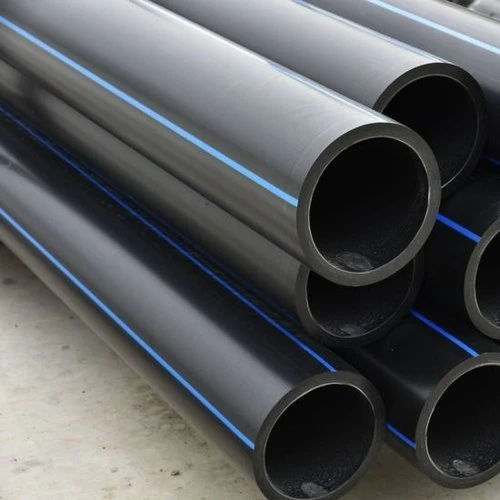
Introduction
In the world of plumbing and piping systems, the choice of pipe material can significantly impact the efficiency, durability, and overall performance of a system. PE pipes and Polypropylene Random Copolymer (PPR) pipes are two popular options, each with distinct properties and applications. This article provides a detailed comparison of PE pipes and PPR pipes, highlighting their key characteristics, advantages, and ideal uses to help you make an informed decision for your piping needs.
What is PE Pipe?
Definition and Types
There are several types of PE pipes, including:
- MDPE (Medium-Density Polyethylene): Offers a balance of flexibility and strength.
- HDPE (High-Density Polyethylene): Known for its high strength and rigidity.
Key Characteristics
- Flexibility: PE pipes are highly flexible, making them easy to install and handle.
- Corrosion Resistance: They are resistant to corrosion, which extends their lifespan.
- Chemical Resistance: Capable of handling a range of chemicals, suitable for various applications.
Applications
PE pipes are commonly used in:
- Water Supply Systems: For potable water distribution.
- Gas Distribution: For transporting natural gas.
- Irrigation: In agricultural applications for irrigation systems.
What is PPR Pipe?
Key Characteristics
- Temperature Resistance: PPR pipes can handle higher temperatures compared to PE pipes.
- Chemical Resistance: Offers good resistance to chemicals and is suitable for hot water applications.
- Durability: Known for its rigidity and long-term performance.
Applications
PPR pipes are commonly used in:
- Hot and Cold Water Systems: Suitable for residential and commercial plumbing.
- Heating Systems: Ideal for underfloor heating and other heating applications.
- Industrial Applications: Used in various industrial processes requiring high-temperature resistance.
Comparison of PE Pipe and PPR Pipe
1. Flexibility and Installation
- PE Pipe: Highly flexible, which makes it easier to install, especially in complex or uneven terrains. This flexibility also helps in reducing the number of joints and connections needed.
- PPR Pipe: Rigid and requires precise installation.
2. Temperature Tolerance
- PE Pipe: Suitable for temperatures up to approximately 60°C (140°F). Not ideal for applications involving high-temperature fluids.
- PPR Pipe: Can handle temperatures up to 95°C (203°F) for short durations, making it suitable for hot water systems and heating applications.
3. Chemical Resistance
- PE Pipe: Excellent resistance to a wide range of chemicals, which makes it versatile for various applications, including gas and chemical transportation.
- PPR Pipe: Good chemical resistance, especially to acids and alkalis.
4. Durability and Longevity
- PE Pipe: Highly durable with a long lifespan, typically ranging from 50 to 100 years, depending on the application and environmental conditions.
- PPR Pipe: Also durable, with a lifespan of 50 to 75 years. Its rigidity can make it less susceptible to physical damage but more prone to cracking under stress.
5. Cost and Economic Considerations
- PE Pipe: Generally less expensive than PPR pipes.
- PPR Pipe: Typically more expensive due to its higher temperature tolerance and rigidity. The higher cost may be justified in applications requiring its specific properties.
6. Environmental Impact
- PE Pipe: Recyclable and has a lower environmental impact during production compared to some other materials. Its flexibility and durability contribute to its eco-friendliness.
- PPR Pipe: Also recyclable but has a more rigid production process that may have a higher environmental impact compared to PE.
Choosing the Right Pipe for Your Application
1. Assessing Temperature Requirements
Choose PPR pipes for applications involving high temperatures or hot water. For standard temperature applications, PE pipes offer flexibility and durability.
2. Flexibility and Handling
If you need a pipe that can adapt to uneven terrain or requires fewer joints, PE pipes are a better choice. For fixed installations where rigidity is important, PPR pipes are ideal.
3. Chemical and Environmental Conditions
Consider the chemical exposure and environmental conditions.
4. Budget Constraints
Evaluate the overall costs, including installation and long-term maintenance. PE pipes are generally more cost-effective for a wide range of applications, while PPR pipes may be more suitable for high-temperature and specialized needs despite their higher cost.
Conclusion
Both PE pipes and PPR pipes offer unique advantages that make them suitable for different applications. Understanding the specific requirements of your project will guide you in selecting the most appropriate pipe type to ensure optimal performance and longevity.
FAQs
Are PE pipes suitable for high-temperature water systems?
PE pipes are not ideal for high-temperature water systems. For temperatures above 60°C, PPR pipes are a better choice.
How do PE pipes handle chemical exposure?
PE pipes offer excellent chemical resistance and are suitable for transporting a wide range of chemicals. However, it’s essential to check compatibility with specific chemicals.
Can PPR pipes be used for gas distribution?
PE pipes are more suitable for this purpose due to their flexibility and resistance to gas.
What factors should I consider when choosing between PE and PPR pipes?
Consider factors such as temperature requirements, flexibility, chemical resistance, durability, installation environment, and budget when making your choice.